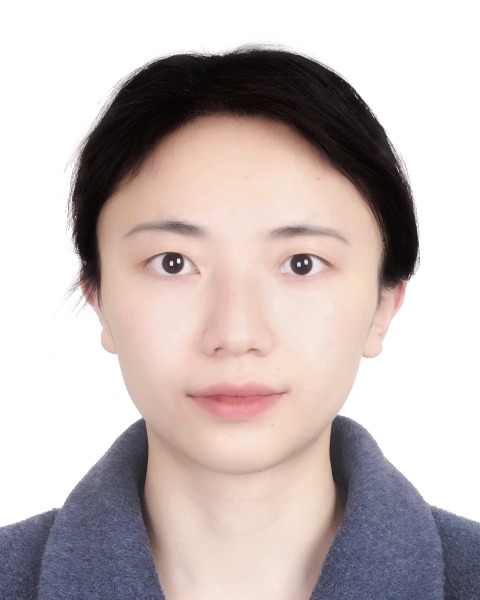Testis/Sperm
Poster Session B
(P-429) A loss‑of‑function variant in HIPK4 causes male infertility with oligoasthenoteratozoospermia
Thursday, July 18, 2024
8:00 AM - 9:45 AM IST
Room: The Forum

Gelin Huang
No. 20, Section 3, South Renmin Road, Chengdu, Sichuan Province
West China Second University Hospital, Sichuan University, United States
Poster Presenter(s)
Abstract Authors: Gelin Huang1; Rui Zheng1; Weiwei Zhi2; Qing Li1; Sixian Wu1; Juncen Guo1; Jierui Yan1; Xueguang Zhang1; Wenming Xu1
1. Department of Obstetrics/Gynecology, Joint Laboratory of Reproductive Medicine (SCU-CUHK), Key Laboratory of Obstetric, Gynecologic and Pediatric Diseases and Birth Defects of Ministry of Education, West China Second University Hospital, Sichuan University, Chengdu, 610041, China.
2. Key Laboratory of Reproductive Medicine, Sichuan Provincial Maternity and Child Health Care Hospital, Chengdu, 610000, China.
Abstract Text: Male infertility, a prevalent reproductive disorder, encompasses a multitude of genetic factors that remain incompletely understood. In this study, we identified HIPK4 as a novel genetic determinant that contributes to male infertility in humans. which induced decrease in the number of sperms and severe sperm morphological anomaly Genetic analysis unveiled a homozygous missense variant in the HIPK4 gene (NM_144685.5: c.1115C >T; p. Ser372Leu) in the patient, resulting in a significant reduction in HIPK4 protein expression. Immunofluorescence analysis demonstrated the localization of HIPK4 in the acrosome of normal sperm, whereas a reduced staining intensity was observed in the patient Liquid chromatography–mass spectrometry/mass spectrometry (LC–MS/MS) analyses and and Co-immunoprecipitation found two interactors of HIPK4 , CALM1 and IQCN. We subsequently confirmed that HIPK4 can phosphorylate IQCN in the presence of CALM1. Further investigation indicated a poor prognosis for the patient undergoing regular intracytoplasmic sperm injection (ICSI) treatment. Our study identifies a novel gene, HIPK4, which contributes to male infertility caused by sperm head defects. This discovery enhances our understanding of the gene variant spectrum and the underlying etiology of oligoasthenoteratozoospermia, thereby contributing to the advancement of genetic analysis in this field.
1. Department of Obstetrics/Gynecology, Joint Laboratory of Reproductive Medicine (SCU-CUHK), Key Laboratory of Obstetric, Gynecologic and Pediatric Diseases and Birth Defects of Ministry of Education, West China Second University Hospital, Sichuan University, Chengdu, 610041, China.
2. Key Laboratory of Reproductive Medicine, Sichuan Provincial Maternity and Child Health Care Hospital, Chengdu, 610000, China.
Abstract Text: Male infertility, a prevalent reproductive disorder, encompasses a multitude of genetic factors that remain incompletely understood. In this study, we identified HIPK4 as a novel genetic determinant that contributes to male infertility in humans. which induced decrease in the number of sperms and severe sperm morphological anomaly Genetic analysis unveiled a homozygous missense variant in the HIPK4 gene (NM_144685.5: c.1115C >T; p. Ser372Leu) in the patient, resulting in a significant reduction in HIPK4 protein expression. Immunofluorescence analysis demonstrated the localization of HIPK4 in the acrosome of normal sperm, whereas a reduced staining intensity was observed in the patient Liquid chromatography–mass spectrometry/mass spectrometry (LC–MS/MS) analyses and and Co-immunoprecipitation found two interactors of HIPK4 , CALM1 and IQCN. We subsequently confirmed that HIPK4 can phosphorylate IQCN in the presence of CALM1. Further investigation indicated a poor prognosis for the patient undergoing regular intracytoplasmic sperm injection (ICSI) treatment. Our study identifies a novel gene, HIPK4, which contributes to male infertility caused by sperm head defects. This discovery enhances our understanding of the gene variant spectrum and the underlying etiology of oligoasthenoteratozoospermia, thereby contributing to the advancement of genetic analysis in this field.
